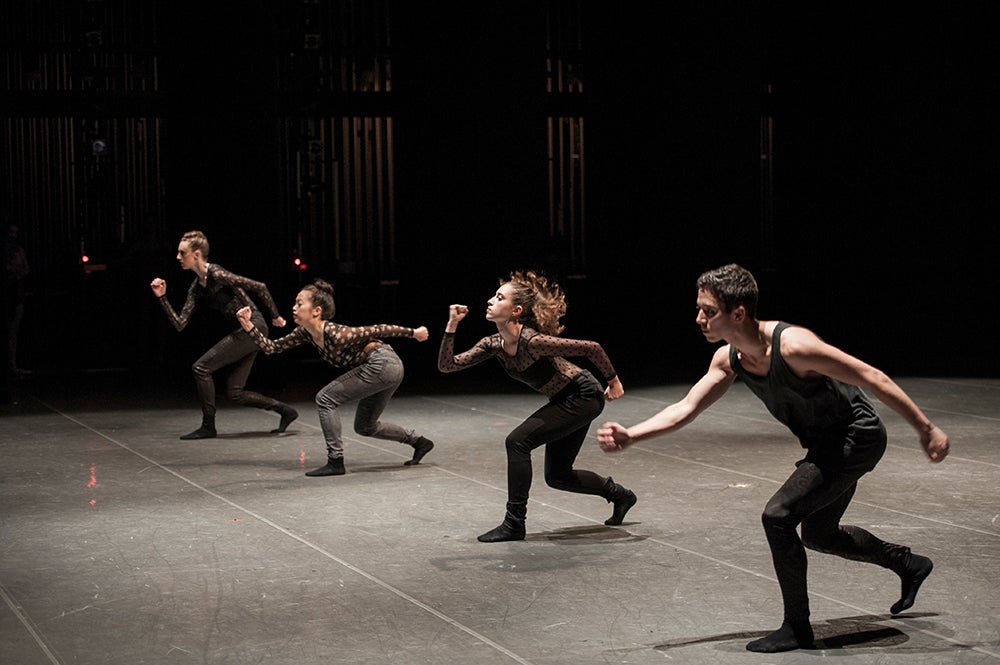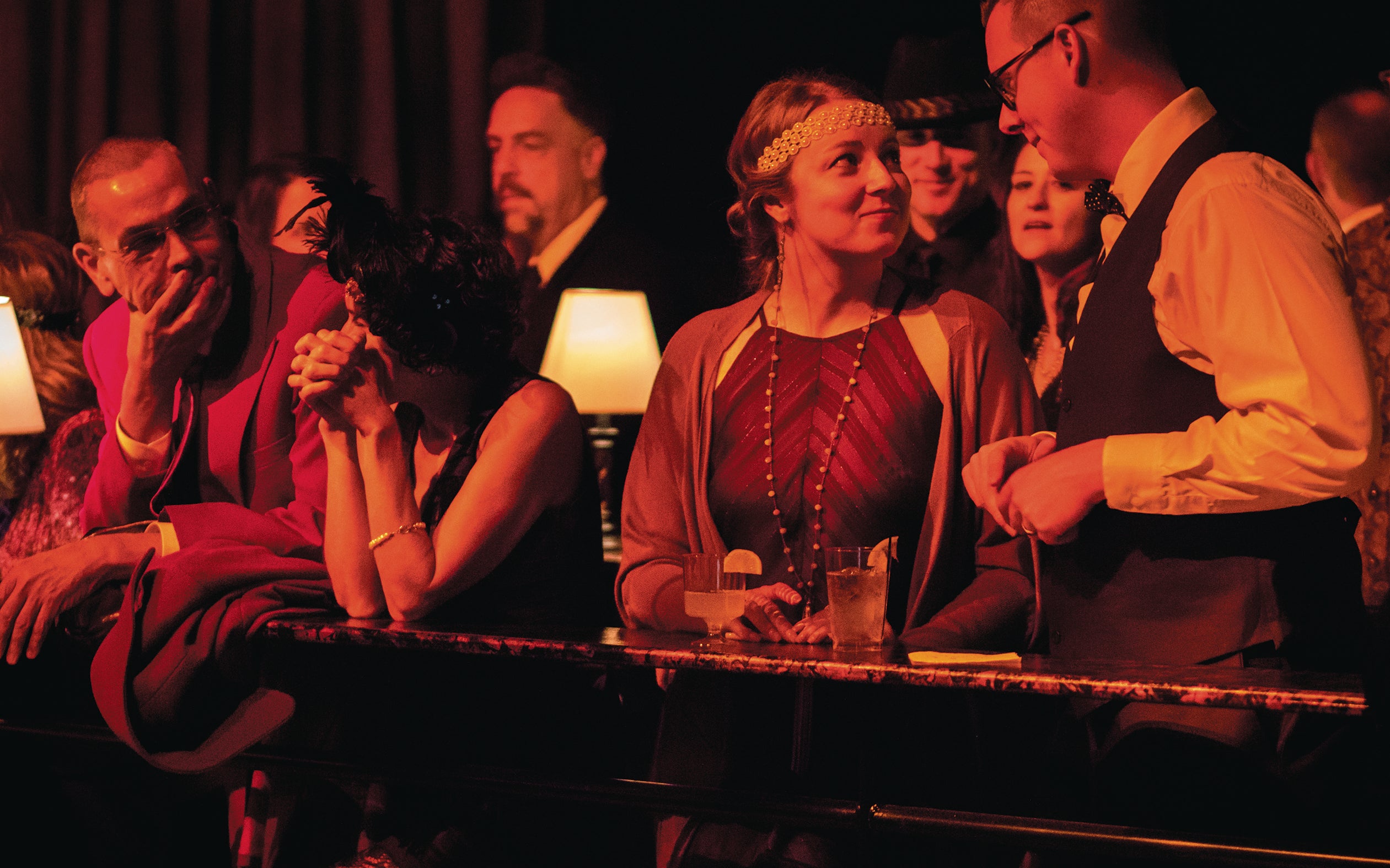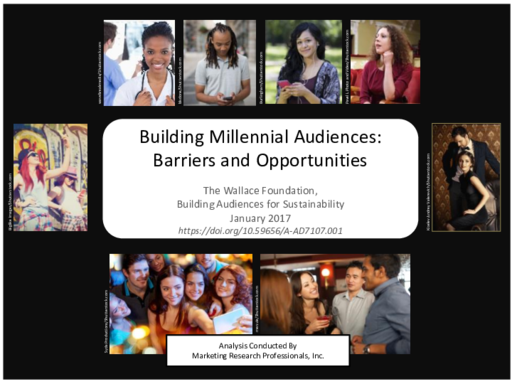
Breadcrumb
- Wallace
- Reports
- Building Millennial Audiences Ba...
Building Millennial Audiences
Barriers and Opportunities

- Author(s)
- Cindy Asen
- Publisher(s)
- Marketing Research Professionals
Summary
How we did this
This PowerPoint presentation synthesizes market research conducted by 25 arts organizations in Wallace’s Building Audiences for Sustainability initiative, along with secondary literature.
Fewer 18-to-34-year olds attend performing arts events than in previous generations. How, then, can arts organizations attract newer, younger audiences?
To answer that question, this PowerPoint presentation synthesizes market research conducted by 25 arts organizations in Wallace’s Building Audiences for Sustainability initiative, along with secondary literature. Note that the data was largely collected in 2015 and representative of people identified as “millennials” during that time period.
Barriers to Participation
Several barriers keep this group from attending arts events, according to the study, including:
Concerns about ticket prices. The biggest barrier to participation is cost. One study found that younger people pegged the price of the cheapest ticket as more than twice as expensive as it actually was. In addition, their concerns about cost often reflect deeper concerns about whether they’d enjoy the experience enough to make it worth the expense.
No one to go with. The age group says it’s hard to find someone to attend performances of classical music, opera, and dance with them. That’s a particular problem because being able to socialize with friends is an important part of the performing arts experience.
Competition from other leisure events. That ranges from rock concerts to dining at restaurants and sporting events.
Other barriers. They include a lack of awareness of arts organizations, busy schedules, and concerns that the event is too hard to get to or too far away.
These barriers exist regardless of an organization’s size, location, or the type of programming offered.

There's not a lot of bragging rights associated with going to the opera or ballet. You don't roll in on Monday morning and be like, ‘Yo, you should have been at this ballet.’
— A millennial interviewed as part of the research
What Arts Organizations Can Do
Arts organizations can overcome these barriers by taking a variety of actions. For example:
- Address concerns about cost by being clear about pricing.
- Market events by highlighting their benefits. That means emphasizing the features that dovetail with the experiences 18-to-34-year olds seek, such as those that challenge them emotionally and intellectually, encourage self-discovery, offer a connection to something larger than themselves, and provide a release from the stresses of everyday life.
- Because this age group likes to prepare before they attend a cultural activity, organizations can provide information via their website, social media, and other online sources. That can also help increase prospective attendees’ confidence they’ll enjoy the experience.
- Create social experiences to appeal to preferences for events that allow them to attend in groups and interact with their peers.
- Focus on “buzz-worthiness.” Younger audiences are attracted to experiences others will like and share on social media.
Key Takeaways
- Misperceptions about ticket prices may be keeping 18-to-34-year olds from the performing arts.
- People in this age group say it’s hard to find someone to attend performances of classical music, opera, and dance with them.
- Group experiences that get attention on social media could help arts organizations attract younger audiences.
- Arts organizations can emphasize the benefits that dovetail with the experiences younger people seek, such as enrichment and a connection to something larger than themselves.
Visualizations

Materials & Downloads


What We Don't Know
- Were the organizations participating in The Wallace Foundation’s Building Audiences for Sustainability initiative typical of performing arts groups in general?
- What were the specific differences in how each organization designed its research?
- Since many members of Gen Z are now approaching the ages of those surveyed, how are their behaviors similar to millennials? How are they different?

